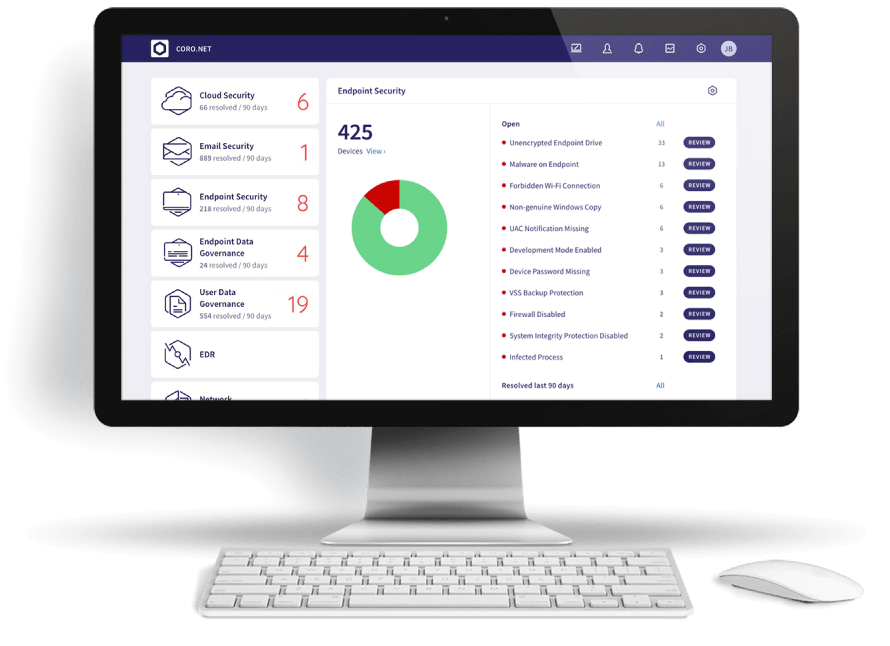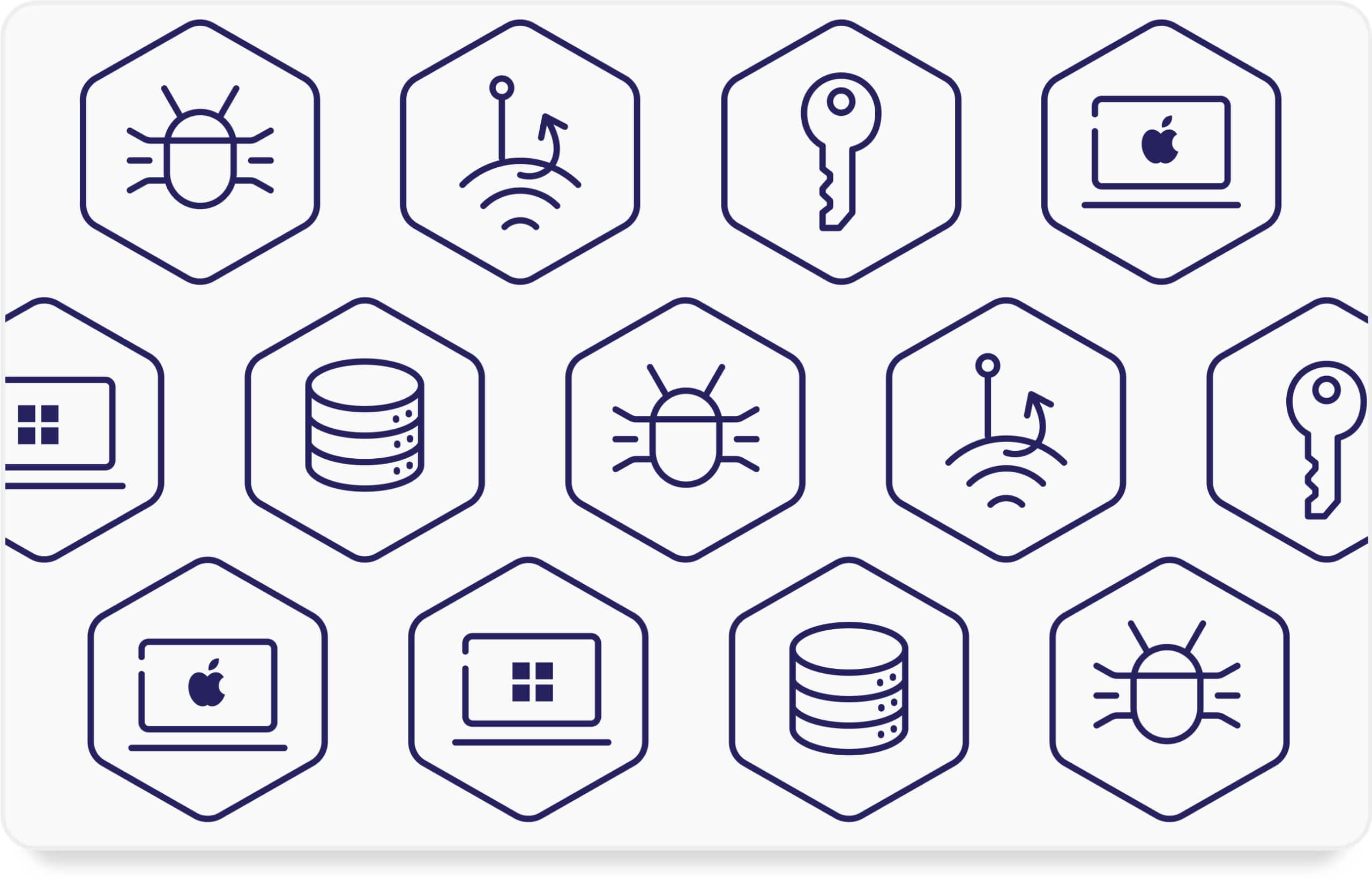Data Security Posture Management (DSPM) refers to the process of continuously assessing, managing, and improving the security posture of an organization’s data assets. It involves the implementation of policies, procedures, and technologies to protect sensitive data from unauthorized access, disclosure, alteration, or destruction.
Forms/Types of Data Security Posture Management (DSPM)
Data Security Posture Management (DSPM) encompasses various forms and approaches, each catering to specific needs and environments, including:
- Agent-based: This traditional approach installs software agents on endpoints (servers, devices) to collect data and monitor security posture. While the approach offers deeper insights, real-time monitoring, and the enforcement of specific controls, it requires agent deployment and maintenance on each endpoint, potentially making it too resource-intensive.
- Agentless: This cloud-native approach collects data without deploying agents, often relying on APIs or network traffic analysis. While this approach is lightweight, scalable, and easier to deploy, it may offer less granular visibility compared to agent-based solutions.
- On-premises: On-premises DSPM focuses on data security within your own infrastructure, which is ideal for organizations with strict control needs or limited cloud adoption.
- Cloud-based: Cloud-based DSPM manages data security across cloud environments (e.g., AWS, Azure) and is well-suited for organizations heavily reliant on cloud infrastructure.
- Hybrid: Combines on-premises and cloud capabilities, catering to organizations using both cloud and traditional infrastructure.
Let’s imagine your business as a highly valuable vault containing various treasures and assets. The Data Security Posture Management (DSPM) system is like the intricate security system you install to safeguard everything inside the vault.
The DSPM system is like the sophisticated security infrastructure you set up to protect the vault. It consists of multiple layers of security measures, including surveillance cameras, motion sensors, access control systems, and alarms.
Like regular security audits, DSPM conducts continuous monitoring and assessments of your data security posture, identifying vulnerabilities, weaknesses, and areas for improvement.
DSPM can also act as insurance against potential losses and damages caused by data breaches, cyberattacks, or non-compliance penalties. By investing in DSPM, you minimize the financial risks associated with security incidents and operational disruptions.
Why Should Businesses Care About DSPM?
So, what does DSPM have to do with your business? Here are a few reasons why we need to start paying attention to DSPM:
Reason #1: It Helps Assess Risk
DSPM serves as the foundation for producing comprehensive risk assessments within organizations. By continuously monitoring and analyzing user access to various datasets, DSPM provides valuable insights into the organization’s security posture. This enables businesses to identify and mitigate potential risks to their data assets, helping them make informed decisions to protect sensitive information.
Reason #2: DSPM Improves Data Security
DSPM solutions enable businesses to quickly assess and enforce data security controls, even in dynamic and complex IT environments, such as hybrid IT and multi-cloud deployments. This agility is crucial for maintaining a strong security posture in today’s fast-paced digital landscape, where data is constantly in motion, and threats evolve rapidly.
Reason #3: DSPM Protects Sensitive Information
With so much of our sensitive data housed in so many cloud repositories, it’s becoming increasingly challenging for companies to track and protect sensitive data effectively. DSPM solutions help organizations identify both known and unknown sensitive data and continuously monitor their security posture. By classifying and tracking sensitive data, businesses can prevent overexposure and unauthorized access, mitigating the risk of data breaches and compliance violations.
Reason #4: It’s a Part of Compliance
DSPM solutions play a vital role in helping organizations maintain compliance with regulatory requirements such as GDPR, PCI DSS, and HIPAA. These solutions detect and alert on instances where sensitive or regulated data violates data residency requirements or data privacy regulations. By segmenting the environment based on data privacy requirements and generating tangible compliance reports, DSPM solutions help organizations demonstrate compliance to auditors and regulatory bodies.
Reason #5: It Saves Money
Investing in DSPM can lead to significant cost savings for businesses. Firstly, it provides insurance against costly incidents like ransomware attacks by enhancing the organization’s ability to detect and respond to security threats promptly. DSPM also enables the automation of manual processes such as policy checks, data classification, and data scanning, reducing the need for manual intervention and driving down operational costs.
DSPM and Your Broader Cybersecurity Program
DSPM fits into popular cybersecurity frameworks, including:
The NIST CSF provides a comprehensive framework for improving cybersecurity risk management across various sectors. DSPM aligns with several key functions outlined in the CSF, including Identify (asset management, risk assessment), Protect (data security controls, access control), Detect (anomaly detection, continuous monitoring), Respond (incident response, mitigation), and Recover (data backup, continuity planning). DSPM helps organizations identify, protect, detect, respond to, and recover from data security threats and incidents in alignment with the NIST CSF.
ISO/IEC 27001
ISO/IEC 27001 is an internationally recognized standard for information security management systems (ISMS). DSPM supports compliance with ISO/IEC 27001 requirements related to risk assessment, asset management, access control, monitoring, incident response, and compliance management. By implementing DSPM practices and controls, organizations can strengthen their ISMS and demonstrate compliance with ISO/IEC 27001 certification requirements.
Related Systems or Technologies
DSPM is related or otherwise connected to a number of technologies, including:
- Security Information and Event Management (SIEM): SIEM solutions collect, aggregate, and analyze log data from various sources across an organization’s IT infrastructure to identify and respond to security incidents. SIEM systems can complement DSPM by providing real-time visibility into security events, correlating data from different sources to detect threats, and facilitating incident response and forensic investigations.
- Security Orchestration, Automation, and Response (SOAR): SOAR platforms integrate security tools, technologies, and processes to automate incident response and streamline security operations. SOAR solutions can enhance DSPM by automating routine security tasks, orchestrating incident response workflows, and enabling faster detection and remediation of security incidents across the organization’s IT environment.
- Endpoint Detection and Response (EDR): EDR solutions monitor and analyze endpoint devices for signs of malicious activity or suspicious behavior. EDR tools can complement DSPM by providing endpoint visibility, detecting advanced threats, and facilitating incident response on individual devices. Integrating EDR with DSPM enables organizations to strengthen their overall security posture and mitigate risks across the endpoint environment.
- Data Loss Prevention (DLP): DLP solutions help organizations prevent the unauthorized disclosure or leakage of sensitive data by monitoring and controlling data transfers within the network and at endpoints. DLP technologies can enhance DSPM by enforcing data security policies, classifying sensitive data, detecting and blocking unauthorized data transmissions, and generating alerts for potential data breaches or policy violations.
- Cloud Access Security Brokers (CASB): CASB solutions provide visibility, control, and security for cloud applications and services used by organizations. CASB platforms can complement DSPM by extending data security controls to cloud environments, enforcing access policies, encrypting data in transit and at rest, and monitoring user activities to detect and mitigate cloud-related security risks and compliance issues.
- Identity and Access Management (IAM): IAM solutions manage user identities, authentication, and access rights across an organization’s IT infrastructure. IAM technologies can complement DSPM by providing centralized user provisioning, access control, and authentication mechanisms to enforce least privilege access and prevent unauthorized access to sensitive data and resources.
Related Regulations or Compliance Goals
Implementing DSPM is not just a good idea – it may be a requirement:
PCI DSS (Payment Card Industry Data Security Standard)
DSPM helps organizations comply with PCI DSS requirements related to data protection, access control, monitoring, vulnerability management, and incident response. DSPM solutions enable continuous monitoring of cardholder data environments, detection of security vulnerabilities and unauthorized access attempts, and timely response to security incidents, helping organizations maintain PCI DSS compliance.
GDPR (General Data Protection Regulation)
GDPR mandates stringent requirements for protecting personal data and ensuring data subjects’ privacy rights. DSPM supports GDPR compliance efforts by enabling organizations to implement data protection measures, conduct risk assessments, monitor data processing activities, enforce access controls, detect data breaches, and demonstrate accountability for compliance with GDPR regulations.
HIPAA (Health Insurance Portability and Accountability Act)
HIPAA imposes strict requirements for safeguarding protected health information (PHI) and ensuring the confidentiality, integrity, and availability of healthcare data. DSPM helps healthcare organizations comply with HIPAA requirements by implementing security controls, conducting risk assessments, monitoring PHI access and disclosures, and responding to security incidents involving healthcare data.









